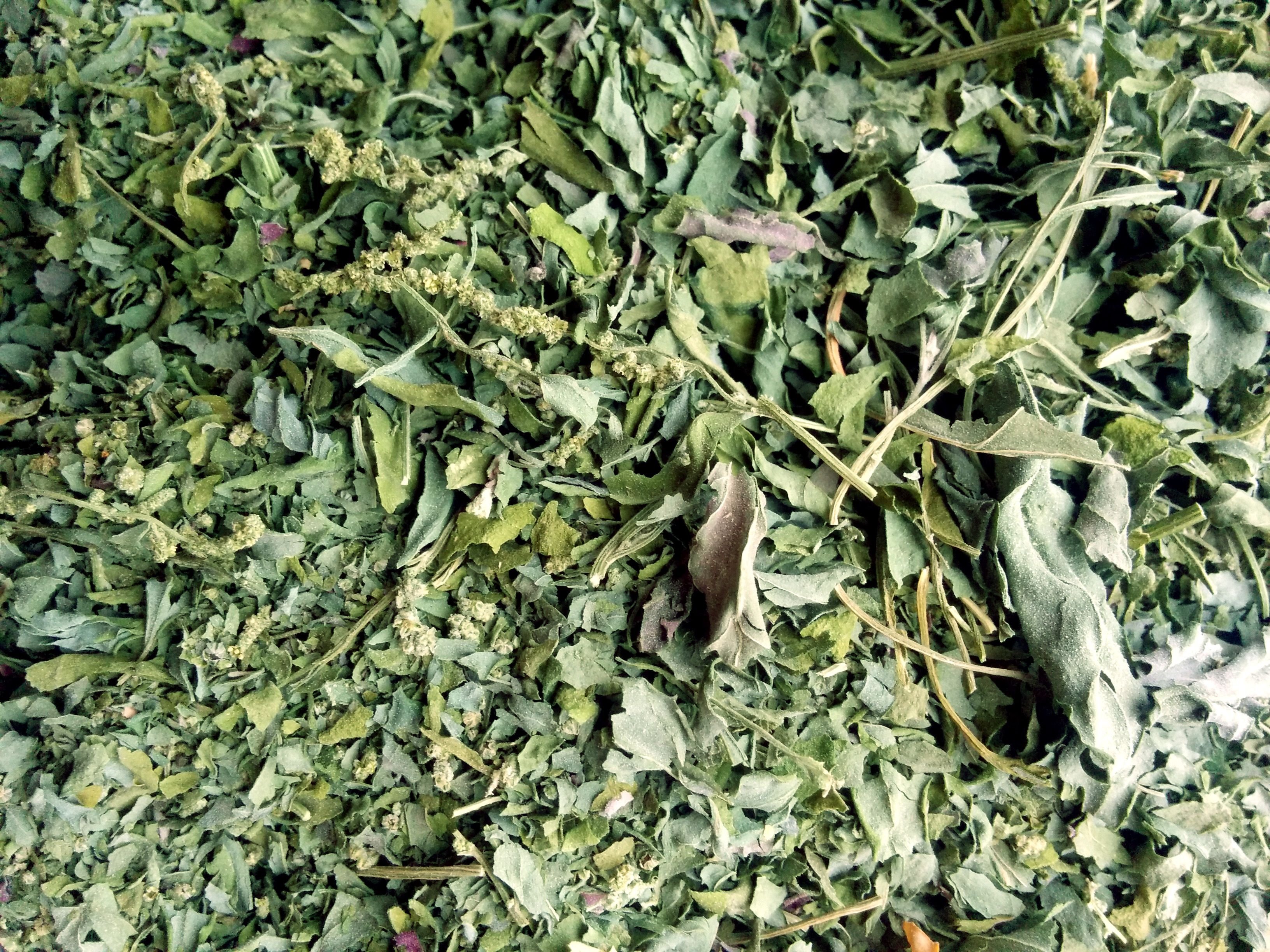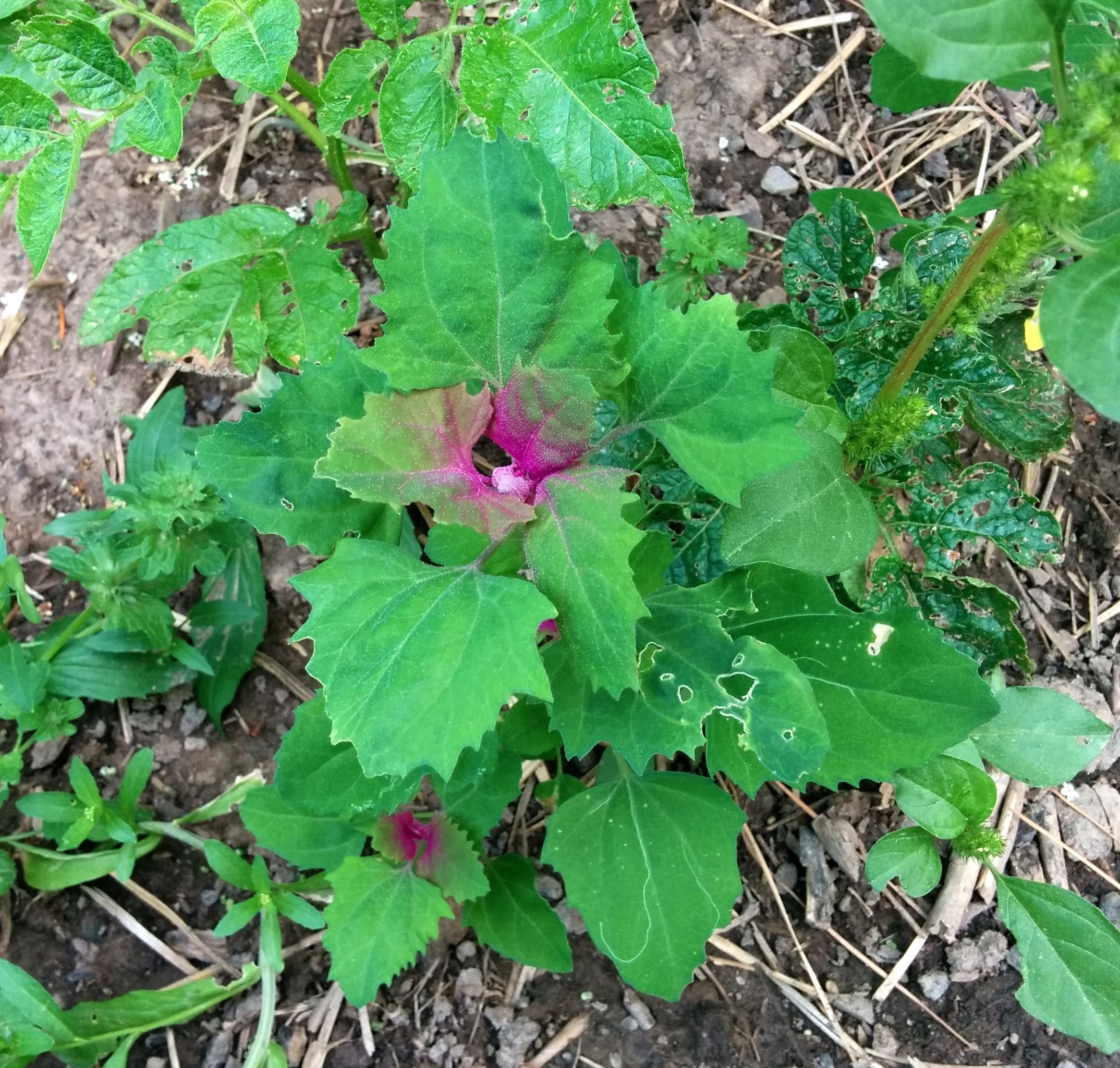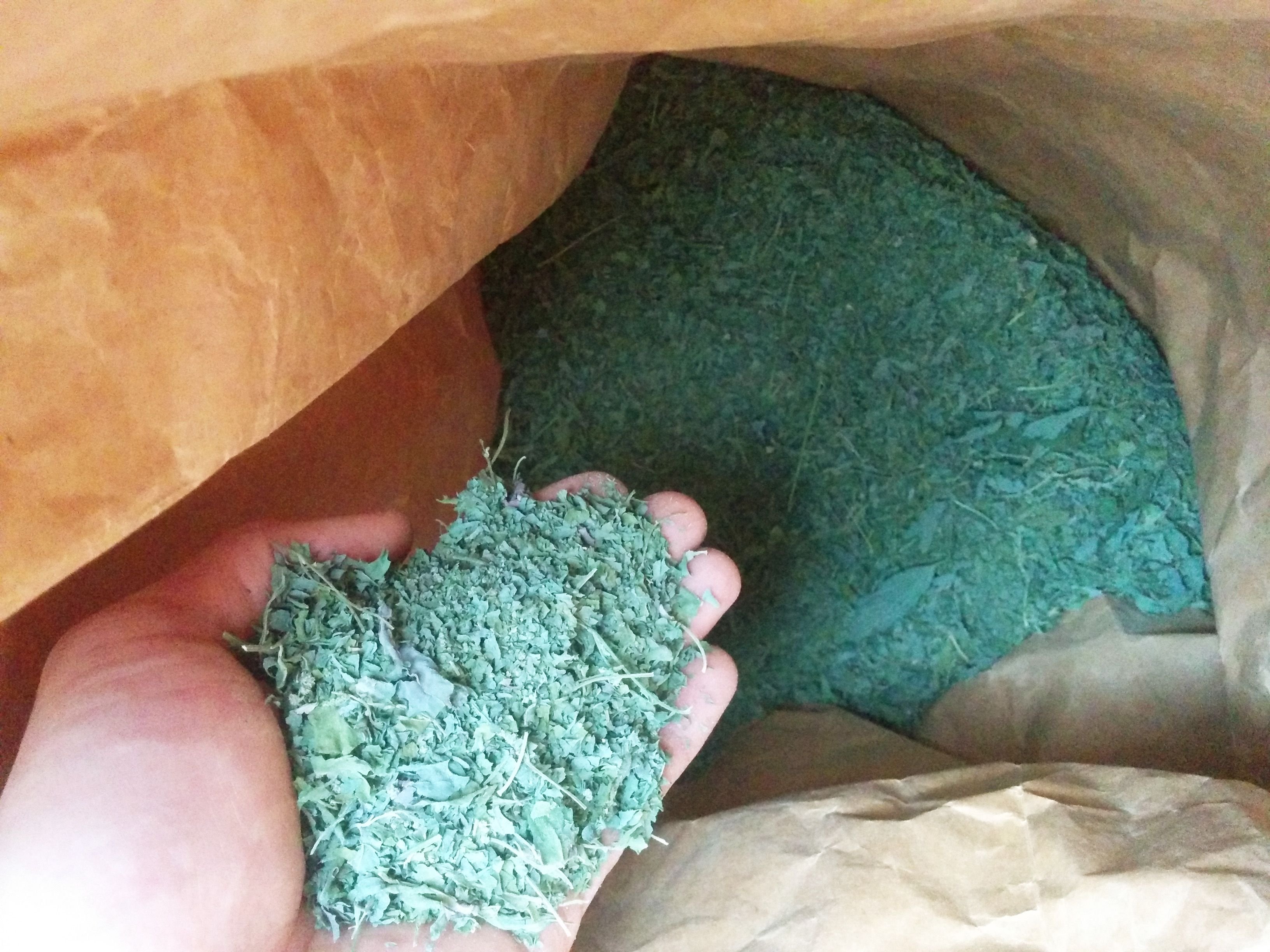As I walked the gardens during the summer and especially the fall I was on the lookout for food I could put up for the winter. Oftentimes my favorite harvests come from wild food including weeds and cultivated plants that become wild and run rampant throughout the garden or property.
In addition to staple veggies, herbs, fruits and nuts I also added a new category to my larder - dried nutritionally dense leaves for supplemental vitamin and minerals in my diet.
As all temperate climate homesteaders know, wintertime is the time when we are lacking fresh food, so we spend much of the season harvesting, processing and storing food for wintertime consumption. The challenge is putting up enough food to meet our dietary needs throughout the winter.

I want to share with you how I listened and learned from the garden how I could meet my wintertime nutritional needs.
Coming into the fall season I discovered a massive supply of Lambs Quarters and their relative Magenta Spreen running rampant.

These Lambs Quarters and Magenta Spreen plants had been reseeded from their parent plants in previous seasons.
The incredible thing is that the Lambs Quarters were literally marching across the lawn from the herb garden where they had started. They made a path about 15 feet long where dozens of rogue Lambs Quarters and Magenta Spreens were growing. (I wish I took a picture of this to show you!!)
By the end of the season they were between 4 and 6+ feet tall with many branches and huge healthy leaves. Their vigor was due in part to the lawn being a grazing ground for chickens and turkeys that free range around the property.
The wildness of these plants is so beautiful to me.
No one asked them to grow where they grew. They chose their places and grew and thrived! And it was a pleasant discovery to find such abundance in these plants. There was literally no effort on our part to maintain these plants. And they still thrived despite hungry hoards of turkeys and chickens walking past them every day due to their numbers and vigorous growth and plenty of other food for the poultry.

Here is a picture of a young Magenta Spreen... beautiful!
In the fall when I saw how robust and abundant these lambs quarters were I jumped on the chance to harvest them.
I cut down many of the tall plants and hung them upside down inside to dry on a line that ran across the room. But I left about half of the plants to continue reseeding the area for future rampant diversity and wild nutrition!
Once dried I cut off branches, held them over a large bowl and stripped the leaves into the bowl by running my hand down the branch. When the bowl got full I crushed the leaves with my hands and then poured them into a paper bag (in this case a paper grain bag) for dry storage in a cool place.

Now that its wintertime I have been tapping into this supply of nutritional dried leaves.
I will grab a handful at a time and add it into soups, stews, curries, chili verde and other dishes that cook for a while so that the leaves have a chance to hydrate, break down and integrate into the dish.
The leaves that were harvested were healthy, rich in color and their plants did not show signs of disease or lack of nutrients. They dried relatively quickly and I promptly processed and stored them. For these reasons I can be sure I maximized the retention of their nutritive qualities.

These same plants were some of the first that we were excited to harvest in the spring flush of green growth, including nettles, orach, dandelion, plantain and others.
What I want you to take away from this post is not that you should specifically look for wild lambsquarters (but if you find it, take advantage!). Rather look for abundance that nature and your garden provide for you! Many gardeners consider lambs quarters a weed... but the savvy homesteaders, permaculturalists and wild food foragers will ally with this beautiful and tasty source of greens.
In future seasons I will be on the look out for other plants that fall into this category of abundance, wild growth, healthy leaves and rich in nutrition so that I can dry them and save them for winter and even year round nutrition.
This harvest represents an ideal food source to me. Little to no effort to grow, wild, healthy, abundant, easy to harvest, easy to store, resistant to disease, high in nutrients and tasty.
For more info on Lambs Quarters check out these excellent posts:
